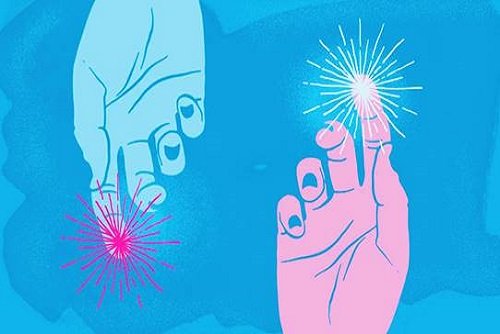Understanding Osteoarthritis: Causes, Symptoms, and Its Impact
The state of osteoarthritis in America today is a startling one. According to the Arthritis foundation an estimated 27 million Americans age 25 and older have osteoarthritis. While this is significantly more common in the elderly community, osteoarthritis or OA remains a debilitating and degenerative disease that can affect even young adults. But what exactly is osteoarthritis?
The Arthritis foundation defines osteoarthritis as “the most common chronic condition of the joints, OA (as its abbreviated form) can affect any joint, but it occurs most often in knees, hips, lower back and neck, small joints of the fingers and the bases of the thumb and big toe” But to truly understand OA we have to first understand how this disease actually occurs in the joints themselves. (Arthritis Foundation)
When examining normal joints, a structural, rubbery material called cartilage extends over the end of each bone. Cartilage provides a smooth, gliding surface for joint motion and acts as a cushion between the bones. In OA, we see a breakdown of cartilage, without this natural cushion, the bones in some cases can come in contact with each other, this bone on bone rubbing, causes friction which may cause pain, swelling and discomfort when moving.
As OA worsens over time, bones may deteriorate and develop growths called spurs. Bits of bone or cartilage may chip off and float around in the joint. In the body, an inflammatory process occurs and cytokines (proteins) and enzymes develop that further damage the cartilage and exacerbates the conditions and subsequently the symptoms. (Arthritis Foundation)
Osteoarthritis Patient Directed Treatment
The state of osteoarthritis in America today is a startling one. According to the Arthritis foundation an estimated 27 million Americans age 25 and older have osteoarthritis.
What can be done about this debilitating disease? We know there is no definitive cure, but there are various treatments that patients can seek to restore function. Many Americans today are diagnosed with OA and are unaware of the various treatment protocols that are available to them. One of the non-surgical treatment options for managing Osteoarthritis is a doctor designed exercise regimen.
According to the latest articles of Health Line newsletter, with minor cases of OA you can apply simple home remedy treatments like 20-30 mins of exercise per day to strengthen your muscles and help to relieve stiffness. Getting consistent, adequate sleep has also been shown to reduce swelling and inflammation. Various heat and cold applications can relieve pain and stiffness in the joints, depending on age and severity of the condition. Extended exercise also comes with an added bonus, weight loss, which puts less strain on the muscles and joints themselves, which reduces pain. (Health Line)
Osteoarthritis Medical Treatments
But in more severe cases your PCP or even specialist doctors like Orthopedic surgeons may suggest surgical options, WebMD confirms that if the patients symptoms exhibit extreme pain, a large amount of cartilage has been denigrated or lost, other alternatives and at home remedies have failed to alleviate pain.
However in recent years new viscosupplementation therapies have emerged that allow patients to avoid the much more costly and often time’s painful routes of surgery. This is where lubricating fluid such as hyaluronic acid is injected into the knee to cushion synovial joints and limit the bone on bone friction in severe OA cases.
This can also be supplemented with platelet rich plasma or PRP injections and Stem Cell Therapy for even more accelerated recovery times. These procedures are often time followed up with a chiropractic or physical therapy component that combines bracing with various exercise therapies to strengthen the muscles and joints over time.
What is important to note is the clinical efficacy of these types of procedures offers asuccess rate that can only be accomplished through the PRP treatment’s precision use of needles that enter the synovial sac to apply the hyaluronic acid which replenishes the synovial fluid acting as the lubricant that cushions the bones and in fact promotes further natural production of synovial fluid in the joints over time. PCC link to.
The accuracy of these injections is secured by using fluoroscopy based systems like a C-ARM device or a digital ultrasound unit, in many cases doctors will also need to apply a digital X-Ray to examine the area prior to the needle guided procedure taking place. (Web MD)
In terms of clinical efficacy, the medical community has been torn on the subject of viscosupplementation, many swear by it and say that it with complimentary application of regenerative medicine is possibly the future of helping OA patients, while others in the medical community scoff are skeptical of viscosupplementation.
Whatever conclusions you draw about these and other therapies, it is always wise for practitioners and patients a like to do your own independent research to make an informed decision, it is the opinion of this writer, that the effects of viscosupplementation are noteworthy and provide a needed clinical treatment and alternative for OA patients that are cost effective when compared to more expensive surgical solutions like TKR known as Total Knee Replacement surgery.
It also provides a relief of symptoms that can possibly be sustained if repeat injections are performed in a regimented fashion for the patient, based on the evaluation of the corresponding healthcare provider. These injections over time can not only reduce pain and stiffness in the knee, but restore some mobility and return the patient to more normalized activities of daily living.
References
Arthritis Foundation: https://www.arthritis.org/about-arthritis/types/osteoarthritis/what-is-osteoarthritis.php
Health Line Newsletter: “Everything you need to know about Osteoarthritis https://www.healthline.com/health/osteoarthritis#treatment
Medscape: Hyaluronic Acid for Treatment of Osteoarthritis in the Knee, Page 6, Paragraph 1 https://www.medscape.com/viewarticle/761879_6





